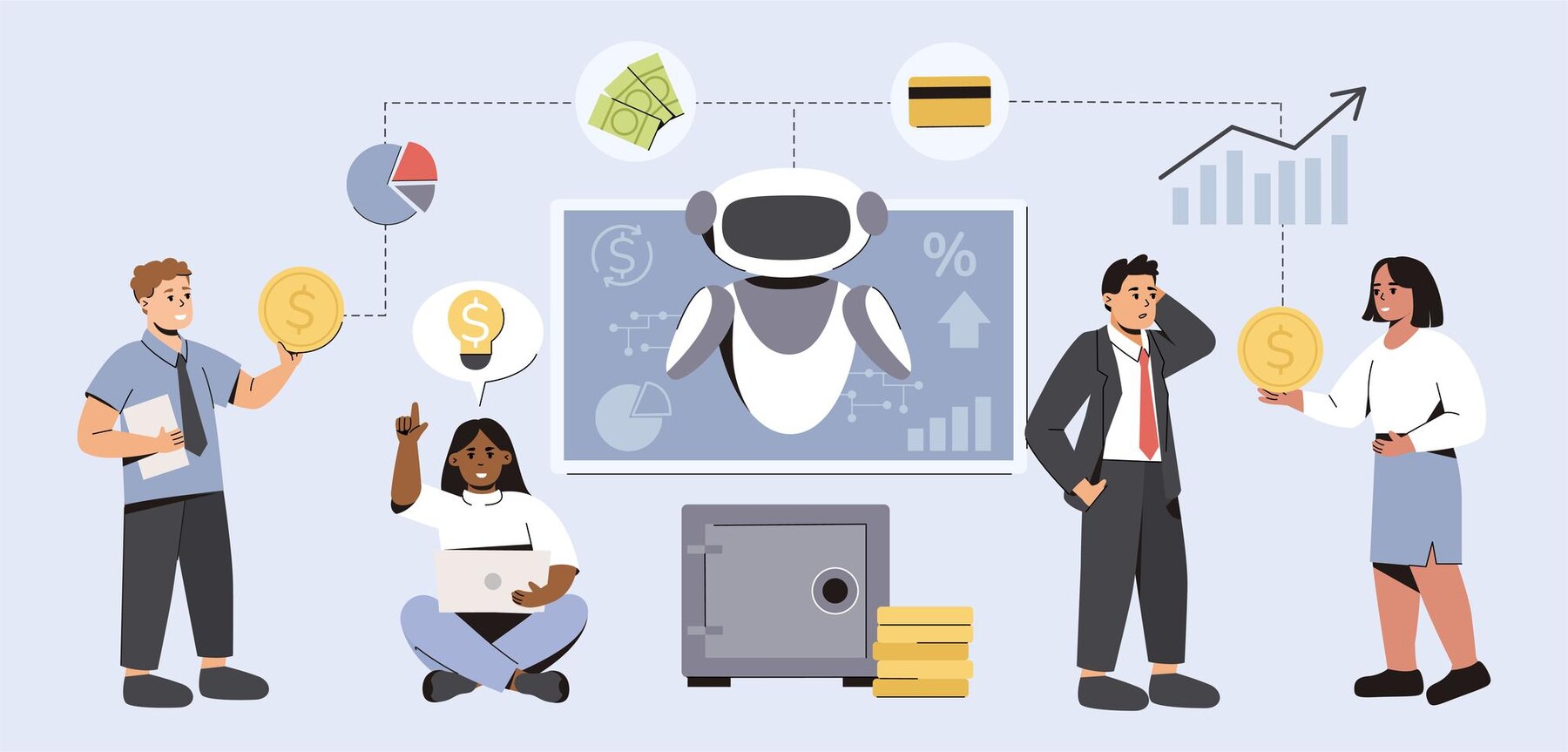The inherent volatility of financial markets poses a constant threat to even the most seasoned investors. With trading bots entering the equation, a concerning question arises: are these automated programs susceptible to losses, and if so, to what extent? This article examines the potential downsides of bot-driven trading, explores the factors contributing to losses, and equips you with strategies to mitigate risks and make informed decisions.
Instances of Trading Bots Losing Money
Instances of Trading Bots Losing Money can serve as cautionary tales in the realm of automated trading. One notable historical example is the “Flash Crash” of 2010, where trading algorithms triggered a sudden and severe market downturn. This incident underscored the vulnerability of relying solely on automated systems in dynamic and unpredictable market conditions.
Despite advancements in technology, trading bots are not immune to common mistakes. In some cases, insufficient risk management strategies, over-optimization of algorithms, or heavy reliance on historical data have led to significant financial losses for users. These instances highlight the importance of careful configuration and continuous monitoring to prevent potential pitfalls in the automated trading landscape.
While not every case ends in catastrophe, understanding the historical setbacks and common mistakes can better equip users to navigate the risks associated with trading bots. Acknowledging the potential for losses is a crucial step in developing a resilient and well-informed approach to automated trading strategies.
Factors Influencing Trading Bot Performance
Factors Influencing Trading Bot Performance are multifaceted, encompassing various elements that can significantly impact the effectiveness of these automated systems. Let’s delve into the key components:
- Market Conditions:
- Volatility: High volatility can pose challenges for trading bots, as rapid market fluctuations may trigger unexpected responses from algorithms.
- Trends: Bots rely on identifying trends, and sudden changes in market direction can affect their decision-making accuracy.
- Economic Events: Major economic events, such as interest rate announcements or geopolitical developments, can create market turbulence that challenges the adaptability of trading bots.
- Proper Configuration:
- Parameters: Configuring the right parameters is crucial for a trading bot’s success. Inadequate settings may result in suboptimal performance.
- Risk Management: Setting appropriate risk management strategies ensures that the bot can navigate various market scenarios without exposing the user to excessive losses.
- Integration: Seamless integration with market data feeds and exchanges is essential for real-time decision-making.
- Monitoring and Adjustments:
- Regular Updates: Markets evolve, and trading bots require regular updates to remain effective. Incorporating the latest data and trends keeps the algorithm relevant.
- Adaptability: The ability of the bot to adapt to changing market conditions is critical. Continuous monitoring allows for timely adjustments to strategies.
- Technical Glitches: Monitoring helps identify and address technical glitches promptly, preventing potential malfunctions that could lead to financial losses.
Understanding these factors and implementing strategies to address them is vital for optimizing the performance of trading bots. It requires a combination of technical expertise, market knowledge, and a proactive approach to ensure that these automated systems can navigate the complexities of the financial landscape successfully.
The Human Element in Trading
| Aspect | Trading Bots | Human Traders |
| Emotional Intelligence | Lacks emotional responses. Reacts based on programmed algorithms. | Emotionally intelligent, capable of reacting intuitively to market changes. |
| Decision-Making | Decisions driven by pre-defined algorithms. May struggle in uncertain markets. | Adaptable decision-making skills, vital for navigating unpredictable market conditions. |
| Intuition | Relies on historical data and programmed logic. | Taps into intuitive insights, valuable for assessing broader contexts and making informed decisions. |
The human element plays a pivotal role in trading, offering a unique set of qualities that distinguish it from automated trading bots. Here’s a closer look at the key aspects:
- Emotional Intelligence:
- Trading Bots: Lacking emotions, trading bots operate solely on programmed algorithms, potentially missing the nuanced understanding that emotions bring.
- Human Traders: Infused with emotional intelligence, human traders can interpret market sentiment, adapting strategies accordingly and making decisions beyond the scope of algorithms.
- Decision-Making:
- Trading Bots: Decision-making is algorithm-driven, and bots may struggle in uncertain markets or during unprecedented events.
- Human Traders: Adaptable decision-making skills empower human traders to navigate uncertainties, utilizing intuition and experience to make informed choices.
- Intuition:
- Trading Bots: Relying on historical data and programmed logic, trading bots might overlook the intuitive insights crucial for understanding market dynamics.
- Human Traders: Human intuition plays a vital role in decision-making, allowing traders to assess broader contexts and make nuanced decisions that go beyond the capabilities of algorithms.
In summary, while trading bots offer efficiency and speed, the human element brings emotional intelligence, adaptable decision-making, and intuition to the trading arena. The most successful trading strategies often emerge from a harmonious integration of both automated systems and human insight.
Ongoing Developments in Trading Bot Technology
Ongoing advancements in artificial intelligence (AI) are at the forefront of shaping the future of trading bot technology. Machine learning algorithms, a subset of AI, enable trading bots to evolve and adapt based on real-time market data. Key aspects include:
-
- Adaptability: AI-powered bots can adapt to changing market conditions, learning from new data and refining their strategies over time.
- Predictive Analytics: Enhanced predictive analytics allow bots to anticipate market trends, providing traders with valuable insights for decision-making.
- Pattern Recognition: Improved pattern recognition capabilities enable bots to identify subtle market patterns, contributing to more accurate predictions.
Integration with Blockchain
The integration of trading bots with blockchain technology is a significant development, introducing transparency and security to automated trading systems. Key facets of this integration include:
-
- Smart Contracts: Trading bots leveraging blockchain can execute trades through smart contracts, ensuring transparent and tamper-resistant transactions.
- Decentralized Platforms: Utilizing decentralized platforms, trading bots can operate on distributed networks, reducing the risk of centralized system failures.
- Enhanced Security: Blockchain’s inherent security features contribute to the integrity of trading transactions, fostering trust among users.
These ongoing developments underscore the dynamic nature of trading bot technology, where AI advancements and blockchain integration are at the forefront of shaping a more robust and secure automated trading landscape. Investors and traders should stay attuned to these innovations to leverage the latest technologies for more effective and secure trading strategies.
Real-life Success Stories
Real-life success stories in the realm of trading bots serve as compelling narratives, shedding light on the potential for substantial gains when these automated systems are wielded judiciously. Take, for instance, the story of Sarah, a novice investor who, with careful research and guidance, implemented a diversified trading bot strategy. Over time, she witnessed steady and consistent profits, showcasing the power of well-configured bots in the hands of an informed user.
Another noteworthy tale involves John, an experienced trader seeking efficiency in his operations. By integrating advanced trading bots into his workflow, John managed to amplify his productivity and capitalize on market opportunities around the clock. His success not only increased profitability but also freed up valuable time for strategic analysis and decision-making.
In a contrasting yet inspiring story, Mark faced initial setbacks using trading bots. However, instead of giving up, he diligently studied the reasons behind his losses, adjusted his strategies, and continuously refined his bot configurations. Over time, Mark turned his challenges into learning opportunities, eventually achieving profitability and becoming a testament to the resilience and adaptability required in the dynamic world of automated trading.
These real-life success stories highlight that while challenges may arise, those who approach trading bots with a combination of diligence, adaptability, and continuous learning can unlock their full potential for financial success.

